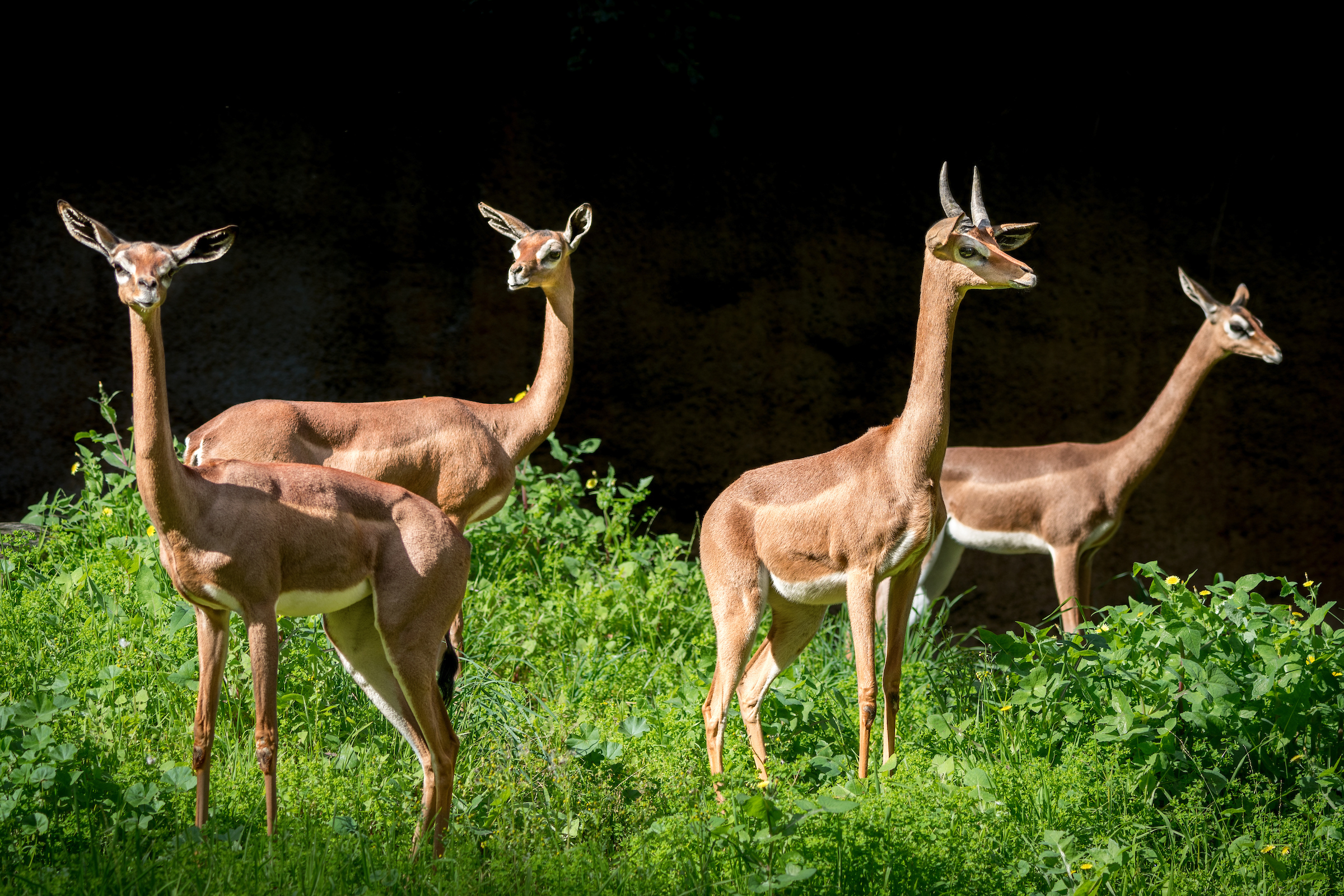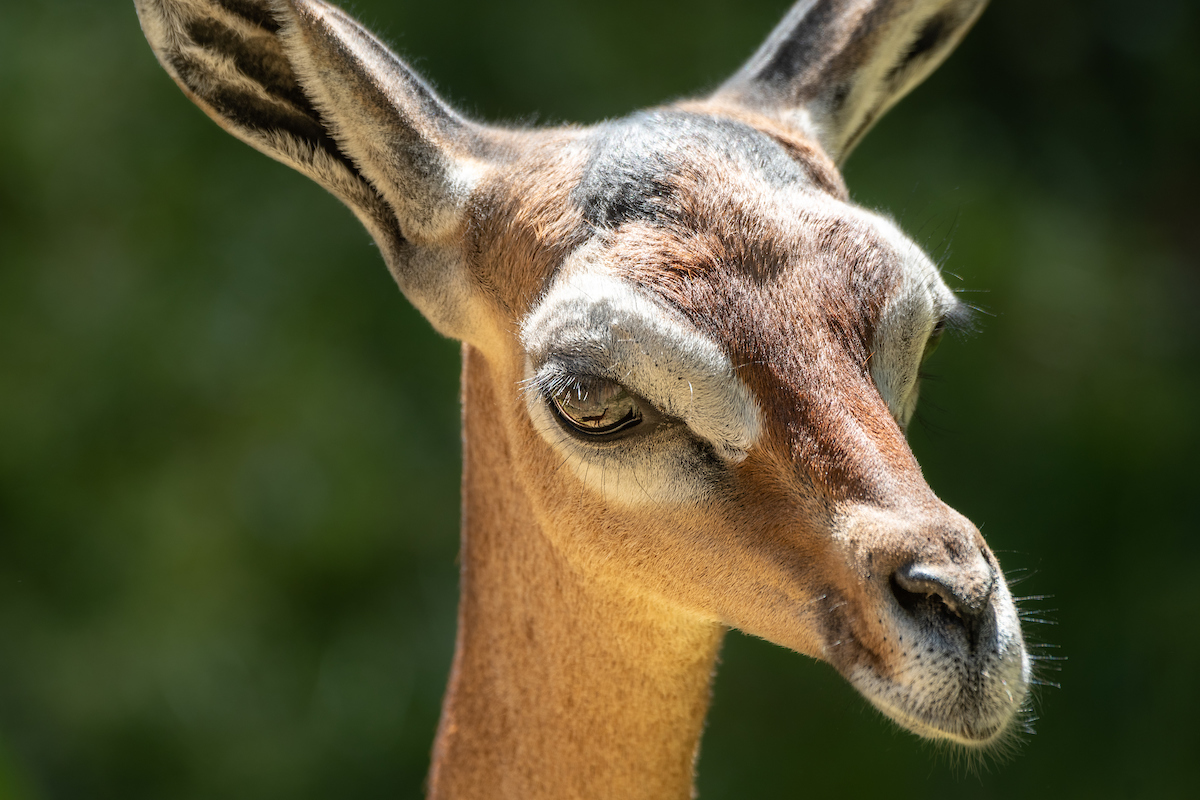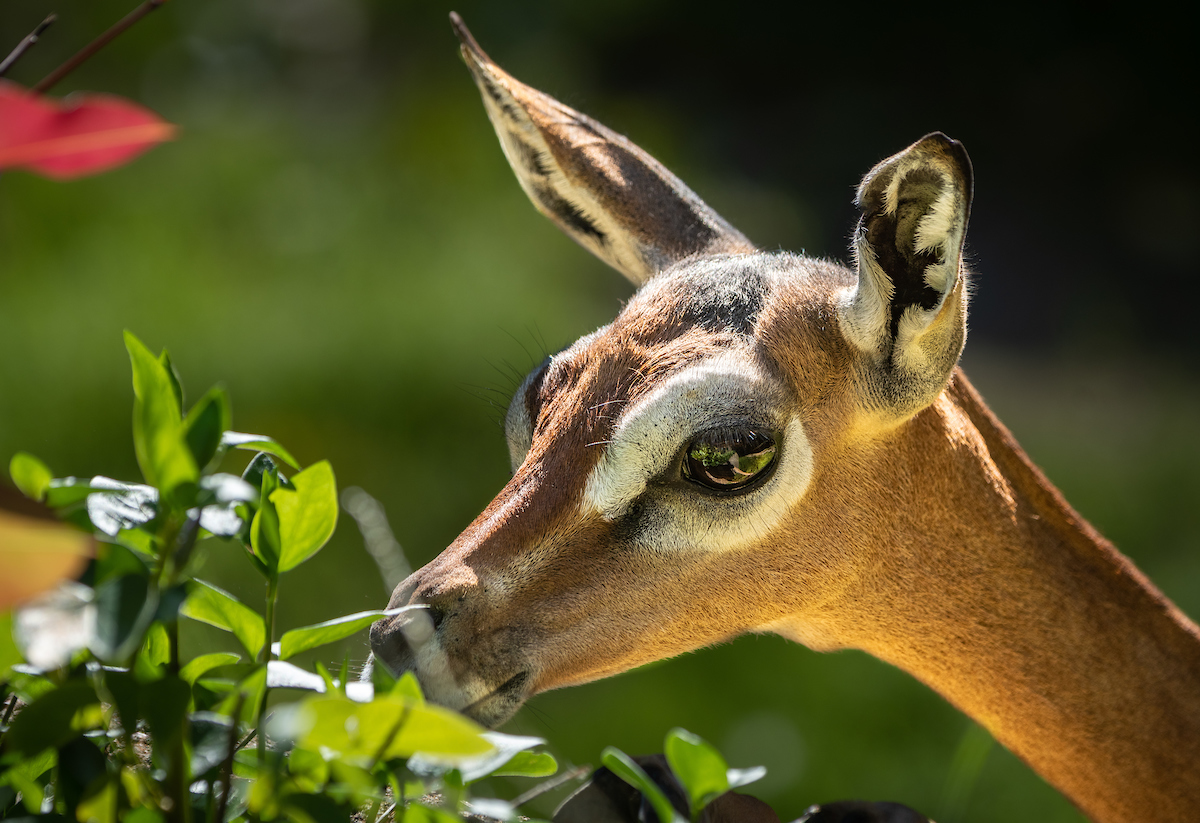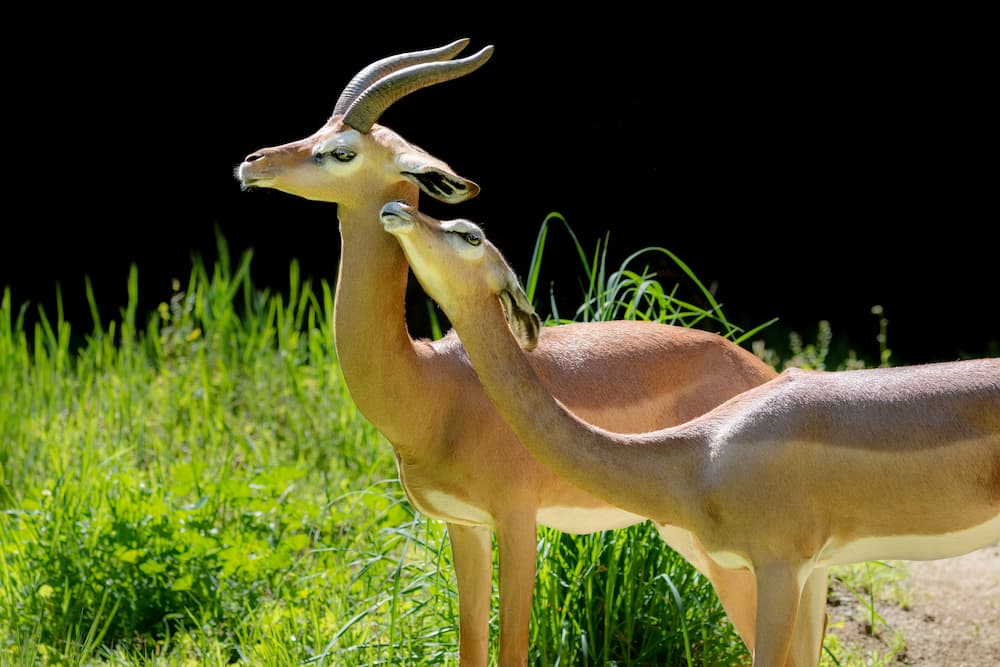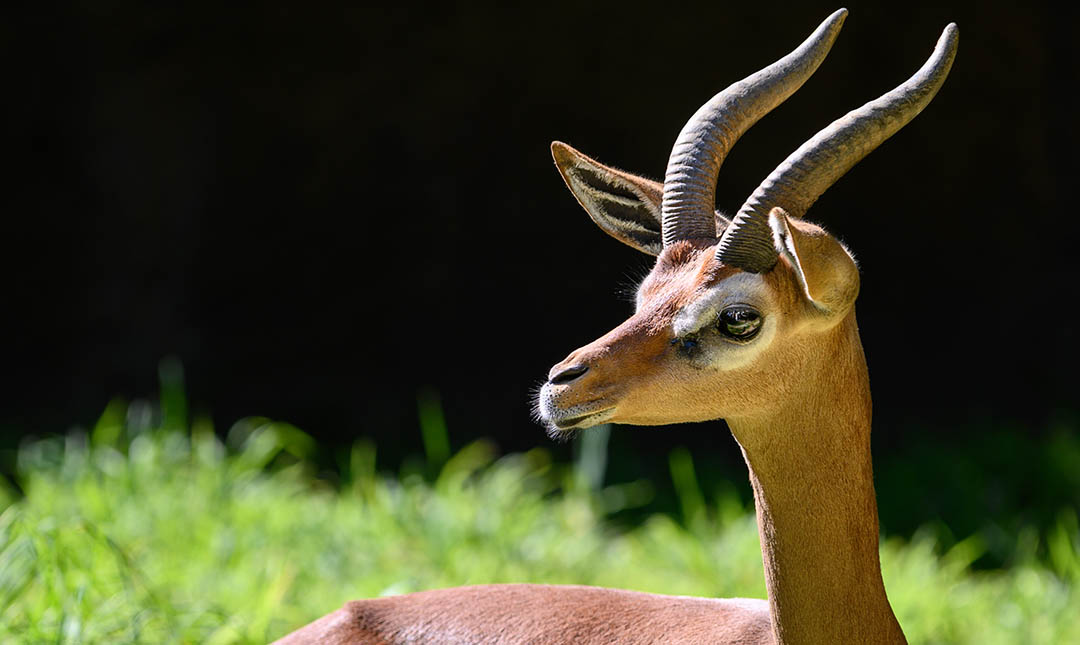About
Although these beautiful and graceful antelopes were not known to European scientists until 1898, they have been represented in Egyptian art since 5600 BCE. Their name means “giraffe-necked” in Somali. Their long necks allow them to reach browse that is too low for a giraffe and too high for a dik-dik. They often stand on their hind legs to reach a better nibble.
Gerenuks are ruminants, so if you watch them closely, you can usually see them chewing cud and tracking it as it travels up from their stomachs to their mouths where is it rechewed and swallowed again to obtain as much nutritional value as possible. Gerenuks are prey animals and are always on the lookout for danger. Almost all large African carnivores have gerenuk on the menu. When threatened, a gerenuk may freeze, hiding behind a bush or a tree, before slowly creeping away to avoid being noticed. Gerenuks also run or gallop toward a place of safety. Although these antelopes are not particularly fast, reaching speeds of only about 35 miles per hour, they are difficult to chase because they dart in, around, and between bushes and trees.
Males are solitary and very territorial. During the breeding season, a dominant male will chase other males out of his territory and breed with all the females. Gestation lasts six or seven months, after which a single calf is born in a hidden spot. Mom visits two or three times a day to provide milk and eat the calf’s feces so that no smell can be detected. The calf will follow the mother after about a month. Female calves are weaned at about a year. Male calves can take up to twice as long. Gerenuk females typically give birth every one or two years, depending on whether the last calf was male or female.
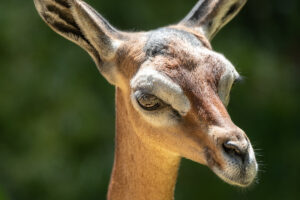
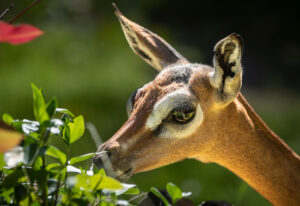
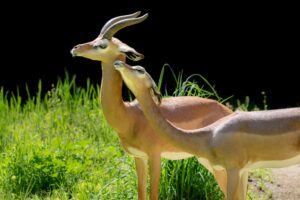
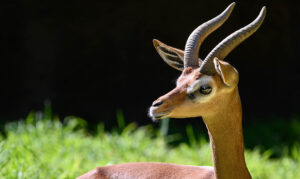
Habitat
Gerenuks are found in East Africa, inhabiting the dry, brushy areas of Somalia, eastern Ethiopia, and Kenya.
Diet
Gerenuks browse in small herds and are picky eaters. With their long necks and nimble lips, gerenuks reach into middle branches and pull off the tender leaves, flowers, and a few kinds of fruit unavailable to the taller giraffe or the shorter dik-dik. They may even stand on their hind legs to get a better nibble. A gerenuk will not eat grass or herbs.
Physical Characteristics
Standing about 28 to 37 inches at the shoulders and weighing 65 to 110 pounds, gerenuks are medium-sized gazelle with long, slender legs and necks. On their small, wedge-shaped heads are two very large ears and big brown eyes placed well to the side. Only the males will have 10 to 17-inch long horns that hook forward at the tips. Lifespan is 10 to 12 years.
LOCATION WITHIN THE ZOO
You’ll find this animal in the Africa section. See Zoo Map.

